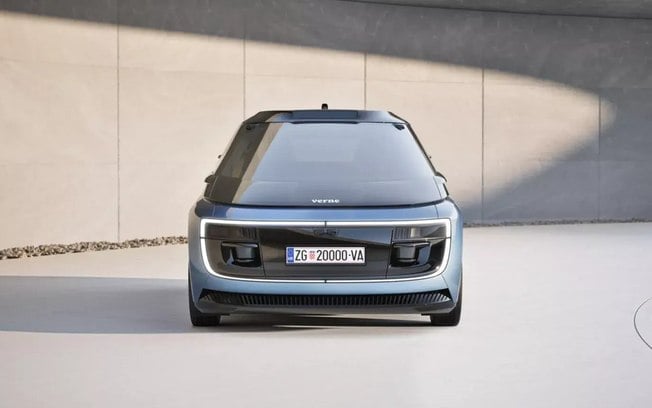The Croatian manufacturer Rimac managed to stand out in the media with the electric supercar Nevera and its more than 1800 hp. It is currently a partner of luxury brand Bugatti, but is working on a project of autonomous taxis, the famous robotaxis, expected to be on the streets of Europe in 2026.
Named “Verne“, in reference to the French science fiction writer, known for works such as Journey to the Center of the Earth and Twenty Thousand Leagues Under the Sea. According to Verne, the writer’s adventure stories serve as inspiration for the autonomous vision of the young Croatian company.
Futuristic design and luxurious interior The look of Verne’s self-driving taxis is eye-catching. The vehicles boast a very long and angled windshield, even resembling a canopy of a military jet.
As the front is very low and the roof is very high, and shifted to the rear, the vehicles have a trapezoidal design. The bumper does not have an air intake and the headlights are LED. With only two doors, the side design is pretty simple, but the long doors and windows also stand out, as well as the cameras and sensors. At the rear, the model has a very generic look. An airfoil hides part of the accentuated trim of the rear window, while the taillights are LED and run from side to side of the rear section of the model.
It is internally where Verne is most surprising. The glazed area on the outside ensures plenty of lighting for the cabin, augmented by a sunroof.
Minimalist interior Unlike other models of self-driving taxis, Verne’s vehicles have a capacity of only two people. The company claims that nine out of ten trips in autonomous vehicles are by one or two people.
This shape allows the cabin to be very spacious. It is worth mentioning the seats, which have “five levels of comfort” and are “extra-large”, the gigantic 43-inch screen and 17 speakers. Verne’s idea was for the interior of its vehicles to be “more of a living room than a car”. The manufacturer goes further and claims that it has more interior space than a Rolls-Royce.
The doors open by sliding backwards in a way that will not hinder the traffic of other vehicles while the taxi is dropping off or picking up a passenger. Verne claims that the space to get in and out of the car is sufficient, despite the fact that it seems small.
Highly Customizable

According to the company, Verne It won’t be your only product. There will also be a dedicated app to customize all the vehicle’s settings such as temperature, lighting, and even the aroma of the car that the trip will take place in.
Each city where Verne operates will have a “Mothership” where vehicles will be inspected, cleaned and recharged every day. The first mothership will be installed in Zagreb, Croatia, the city where Rimac and Verne are located.
The first vehicles are expected to start being seen on the streets of the Croatian capital in 2026. For now, Verne is still building its factory. The brand says it already has contracts with 11 cities in the European Union, the United Kingdom and the Middle East, as well as contacts with 30 other cities around the planet.


